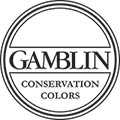AN INVESTIGATION OF THE PHOTOCHEMICAL STABILITY OF UREA–ALDEHYDE RESIN RETOUCHING PAINTS: REMOVABILITY TESTS AND COLOUR SPECTROSCOPY
E. René de la Rie, Suzanne Quillen Lomax, Michael Palmer, Lisha Deming Glinsman and Christopher A. Maines
ABSTRACT
Paints for retouching, prepared specifically for this study using a low molecular weight urea–aldehyde resin as a binding medium, were applied as films and tested for photochemical stability by accelerated aging in a xenon arc Weather-ometer. Five commonly used retouching paints, including paints containing poly(vinyl acetate), acrylic and natural resin binding media, were tested as well. Changes in the paint films were monitored using solvent-removability tests, colour spectroscopy and gloss measurements. The urea–aldehyde resin paints show good photochemical stability and remain removable using low-aromatic hydrocarbon solvents after 3000 hours of aging. Because of their low viscosity, due to the low molecular weight of the binding medium, these paints are expected to have handling and optical properties comparable to those of natural resin paints and are particularly suitable for use in glazes and where relatively high colour saturation is required.

